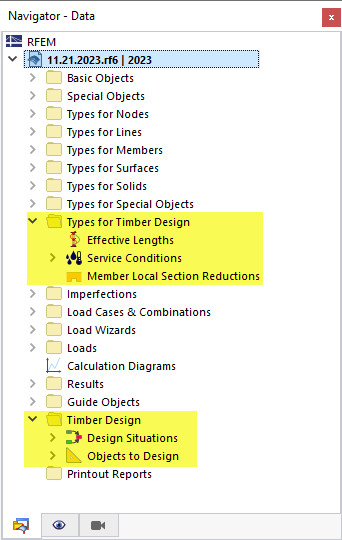As soon as you activate "Timber Design" and select a "standard group for timber design" in the model's Base Data, two additional folders appear in the "Data" navigator:
- Types for Timber Design
- Timber Design
The elements of the Types for Timber Design can be assigned to the objects to be designed. This way, you define the essential boundary conditions for the timber design checks. The table manages the types for timber design in the "Structure" category as properties of the model objects. Further explanations can be found in the subchapters of Types for Timber Design.
Objects of the Timber Design category are also accessible in the table. Select "Timber Design" in the list to manage the input data of the timber design in a clearly arranged form. The tables and input dialog boxes of this category are described in detail in the chapter Timber Design.
These tables and objects also form the basis of the documentation that you can prepare in the printout report. The options available for this are described in the chapter Printout Report.
Further settings for the timber design can be defined in various input dialog boxes of the RFEM user interface. For example, you can use members, member sets, member representatives, or member set representatives for the design and define the design supports for the design check for compression perpendicular to the grain, which also serve as supports for the serviceability design checks. An explanation of the essential entries that are not part of Types for Timber Design or the input tables for the timber design can be found in the chapter Options for Timber Design.

